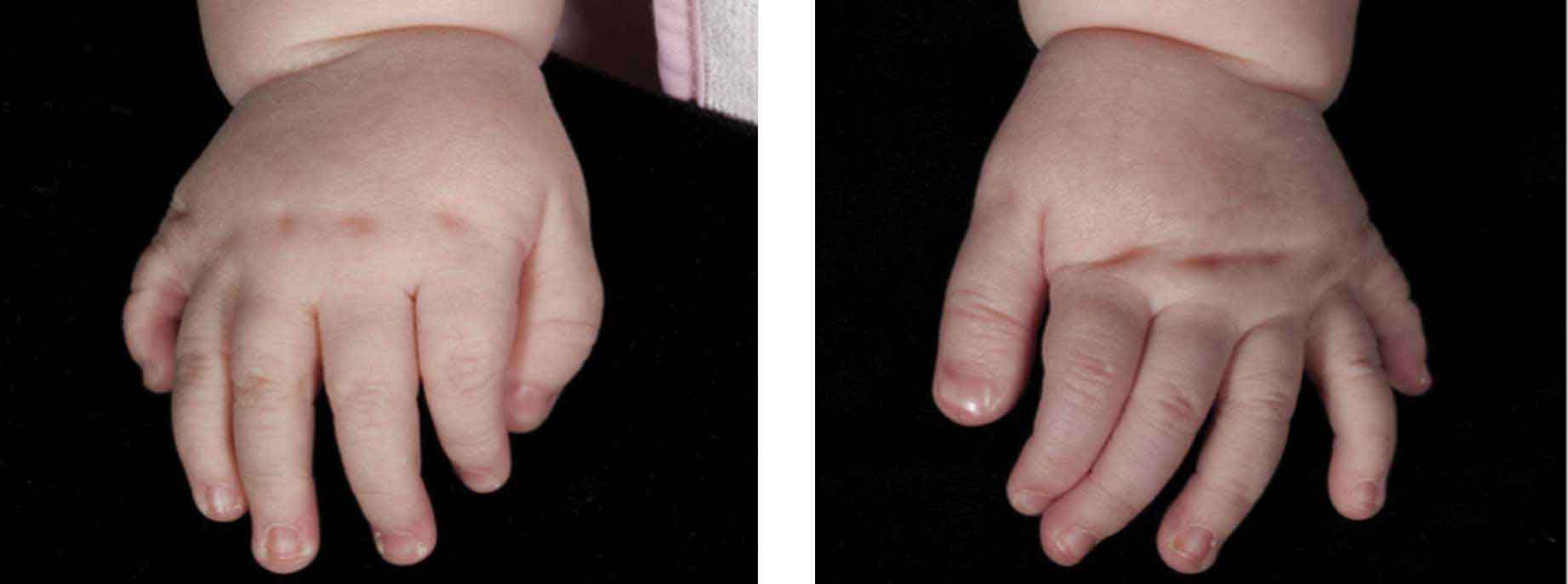5. Duplication
5.1. Polydactyly
Polydactyly is the congenital formation of an extra digit (whole or part). Alongside syndactyly, it is the commonest congenital hand abnormality.
The duplication may be pre-axial (radial), i.e. thumb duplication, central (affecting index, middle or ring fingers) or post-axial (ulnar). The little finger is most commonly affected (ulnar polydactyly; inheritance is autosomal dominant) and most prevalent among Afro-Caribbean populations. Ulnar polydactyly is classified into three groups (Stelling, 1963):
- Type 1 – soft tissue mass without bone and often a small pedicle
- Type 2 – complete digit with all tissues
- Type 3 – complete ray including metacarpal.
Type 1 is very common, usually at the level of the proximal phalanx, and is easily excised under local anaesthesia in the first few weeks of life. Type 2 requires formal resection under general anaesthesia, with partial excision and reconstruction of the MCPJ, metacarpal or little finger phalanx (depending on the articulation of the extra digit). Type 3 is managed with ray amputation and reinsertion of the abductor digiti minimi tendon into the little finger.
Central polydactyly is often accompanied by a range of syndactylies. Such polysyndactylies are frequently seen with HOXD19 mutations and syndromes such as trisomy 13 and Biemond’s. Their anatomy is highly variable and any surgery to excise the central ray must include meticulous dissection of the neurovasculature.


